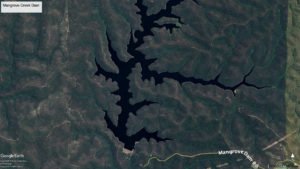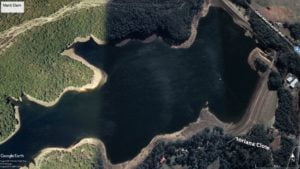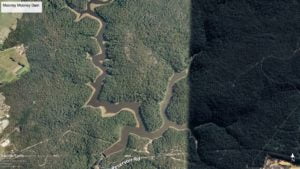The Central Coast’s water supply system is the third-largest in all of New South Wales, serving more than 320,000 people and over 130,000 homes and businesses. The system is made up of a series of dams, reservoirs, pipelines and water treatment plants, each serving an important role in bringing clean, safe drinking water to people throughout the region. Here’s what you need to know about how the Central Coast water supply system works.
An Overview of the System
The bulk of the drinking water in the Central Coast comes from several creeks and rivers throughout the area, including Mangrove Creek, Mooney Mooney Creek, Ourimbah Creek and Wyong River. When water levels in these bodies of water are low, like during drought conditions, the system can pull additional stored water from the Mangrove Creek Dam. The Mardi-Mangrove Link pipeline brings water from Wyong River to the dam to boost the water supply. The Hunter Connection pipeline then transports water into the system for consumer use.
The Central Coast Council manages and operates the system. This includes maintaining the dams and treatment plants, as well as ensuring adequate water delivery to local communities each day. The council is also responsible for the long-term planning of the system, including water strategy development for the future.
Dams and Water Catchments
There are three primary dams in the system: Mangrove Creek, Mardi and Mooney Mooney. The Mangrove Creek Dam is the largest of the three, though it is primarily a storage dam rather than a collection dam. It provides a whopping 93 percent of the water storage for the region, which is crucial in times of drought.
The Mooney Mooney Dam is the oldest dam in the region. It pumps water to the nearby Somersby Treatment Plant to get it ready for consumer consumption. The Mardi Dam is not a dam in the traditional sense, as it is not actually fed by the waterway. Instead, pumps bring water to the dam from Wyong River and Ourimbah Creek.
Catchments are the areas where water from creeks, rivers and lakes makes its way into the groundwater supply or ocean. To ensure the best water quality, it is critical that we adequately manage and protect our local water catchments. The fewer contaminants there are in the water to begin with, the easier it will be for the water treatment plants to get it ready for human consumption.
To help protect the catchments, the local council has restricted access to the areas around the dams. Not only does this help to keep the water cleaner, but it also protects a wide range of plant and animal species throughout the region, while also minimising the impact on Aboriginal artefacts and evidence.
The Water Treatment Process
Even at its cleanest, our water supply isn’t quite ready for you to drink just yet. First, it needs to go through one of the Central Coast’s two water treatment plants. The Mardi Water Treatment Plant processes more than 160 million litres of water every day, while the Somersby Water Treatment Plant supplies about 144 million litres.
The water treatment process follows these steps:
- Alkalinity Adjustment – To prevent pipe corrosion during the treatment process, lime and carbon dioxide are added to the water.
- Manganese Removal – Manganese can leave drinking water discoloured, so it needs to be removed to enhance clarity.
- Coagulation, Flocculation and Sedimentation – These processes involve adding polymers to the water to attract any sediment, causing it to clump together. This makes it easier to remove silt, mud and other debris that settles at the bottom of the sedimentation tanks.
- Pre-Chlorination – A dose of chlorine removes any remaining manganese from the water.
- Filtration – This process removes any solid organic material that is still left in the water before it heads to the clear water storage tank.
- Disinfection – Although all of the sediment and debris will have been removed by this point, there could still be bacteria and micro-organisms in the water. Chlorine is incredibly effective and long-lasting when it comes to its anti-bacterial properties. The Central Coast Council carefully monitors chlorine levels in the water to ensure any residual chlorine won’t pose a health risk.
- Fluoridation – The NSW Department of Health requires that fluoride be added to the water supply to reach a concentration of one part per million.
- pH Correction – The final step in the process is to readjust the pH of the water back to its natural, neutral level.
Source: Central Coast Council
Looking to the Future with WaterPlan 2050
In the wake of recent drought conditions all across Australia, the Central Coast Council has instituted a plan called WaterPlan 2050. The goals of this plan are to improve the existing water supply system, ease water restrictions for consumers, help people use water more efficiently and set up the system to adapt to changes in population and climate over time.
The council has already upgraded the water system by extending the Mardi-Mangrove pipeline to provide additional water to the people during times of drought. They also plan to install an additional dam at Tillegra to allow for even more water collecting and storage.
On the consumer side, the WaterPlan 2050 proposes to keep the focus on consumer education, helping the public to understand the importance of safe water use and conservation. Rebates and incentives for using water-efficient appliances will also go into effect, helping consumers who make water conservation a priority save money as well.
Finally, the council is researching future options for collecting and processing water, including tapping the groundwater, collecting rainwater and recycling used water. The objective here is to increase the water supply to the point that future generations won’t have to worry about running out of water during drought conditions while also minimising water restrictions for current Central Coast residents.
Learn More about the Central Coast Water Supply
For more information visit:
Central Coast Council
WaterPlan 2050
Call Fluid Plumbing on the Central Coast for any plumbing issues.



